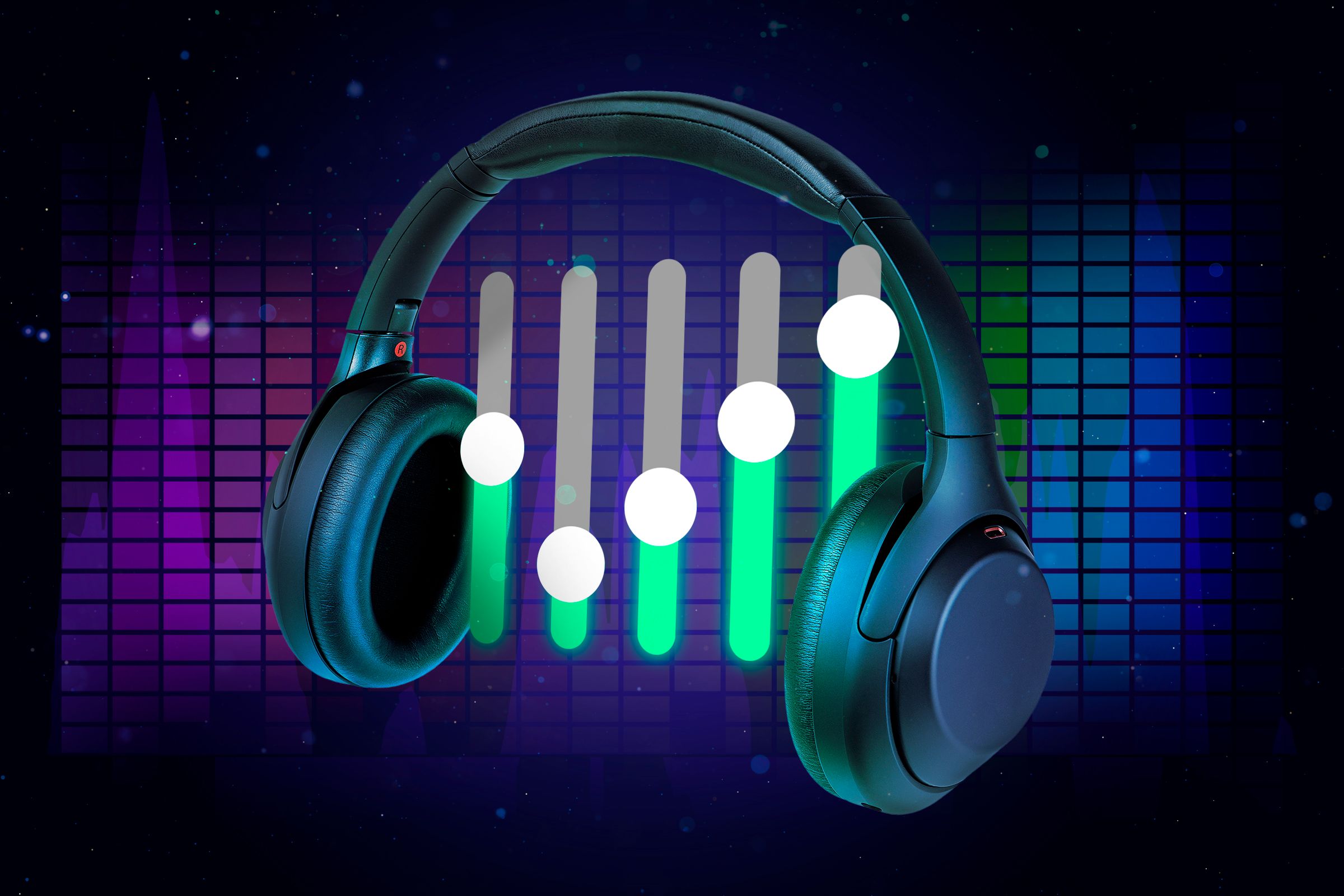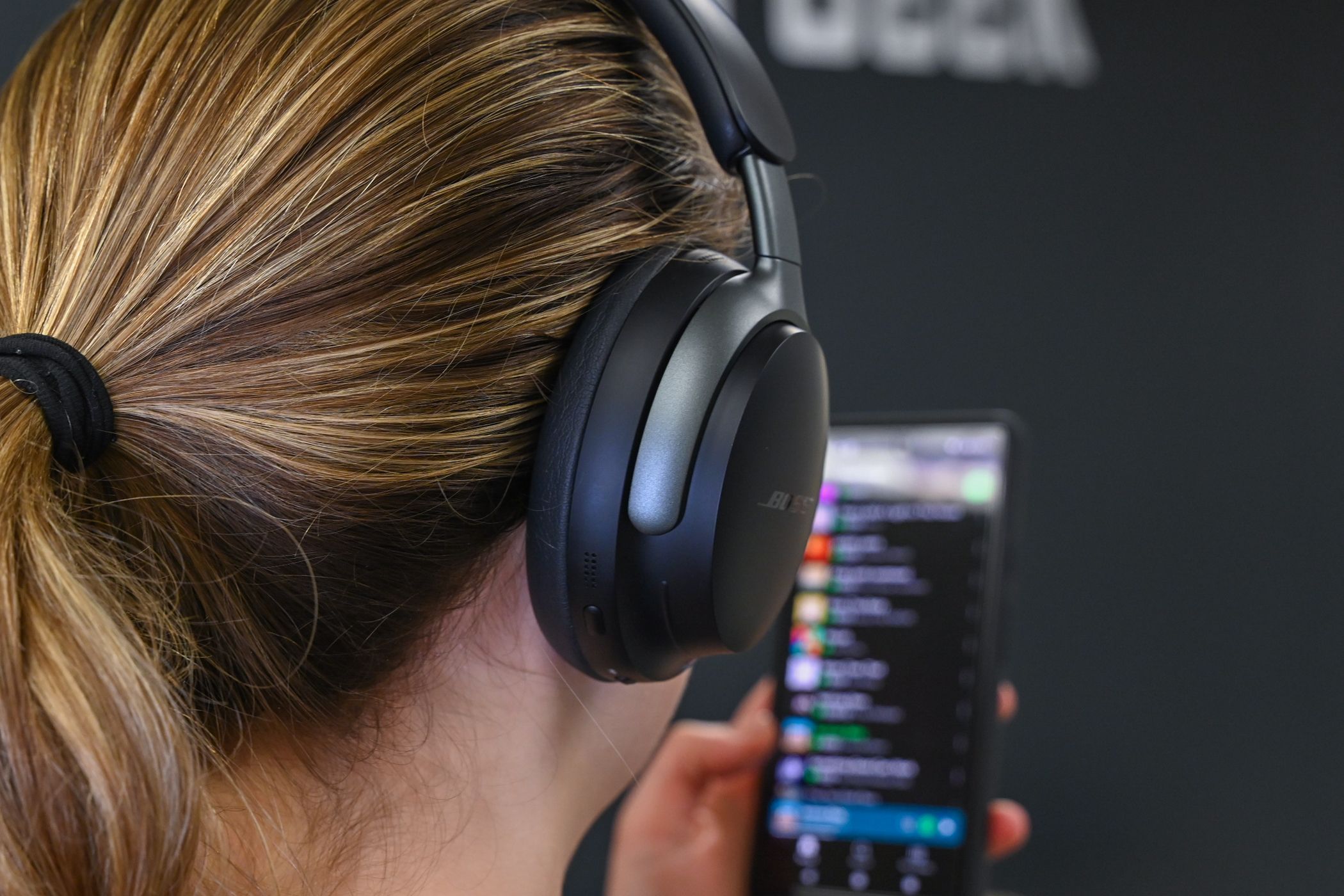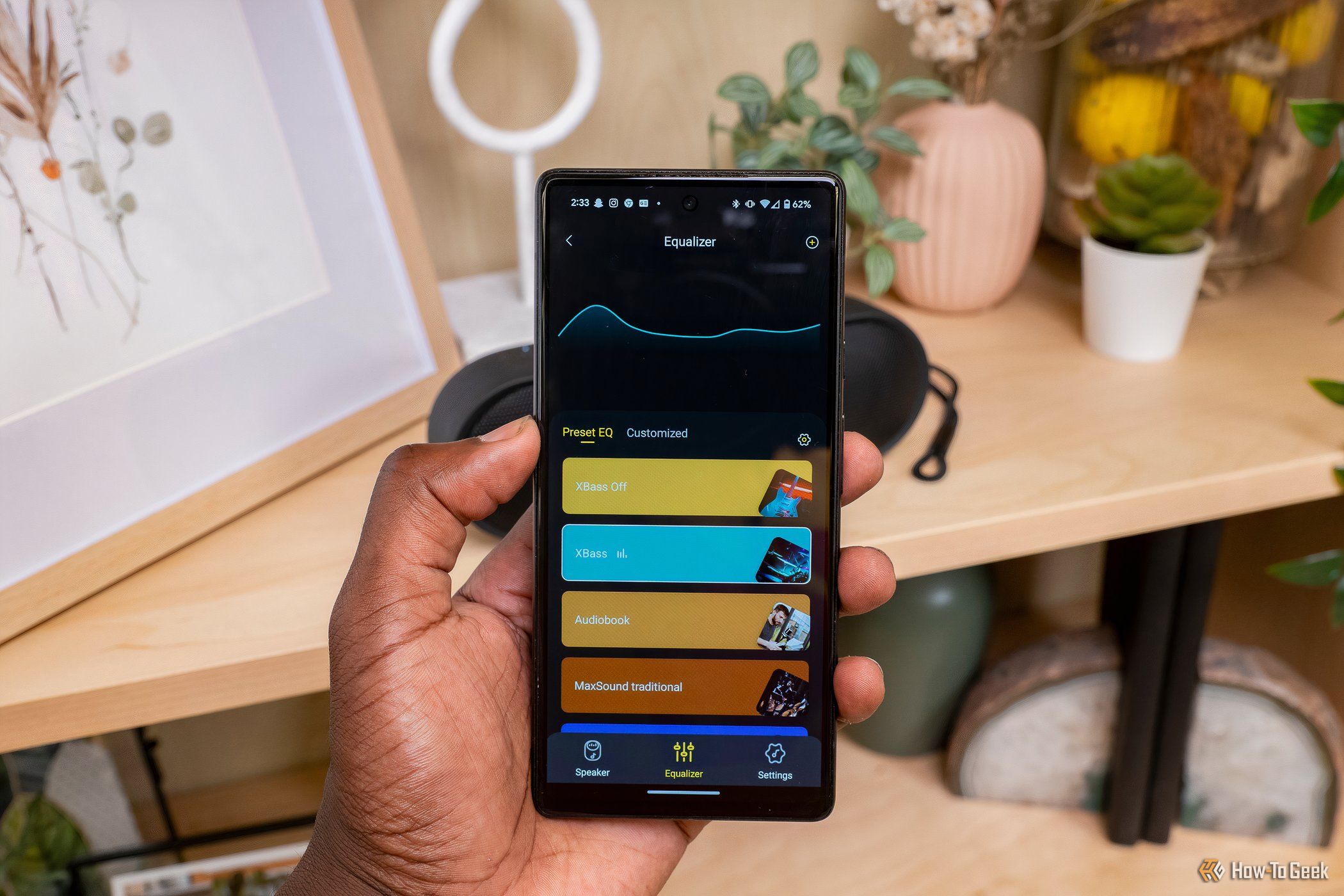
Key Takeaways
- Equalizers adjust sound frequencies for better music quality, with presets catering to different genres.
- Frequency ranges like sub-bass, bass, mids, and highs play vital roles in music, affecting depth and clarity.
- Customizing EQ based on music genre and using presets can improve sound quality without distortion.
If you think your music could benefit from some tweaks and adjustments, you might want to try out an equalizer. Equalization is a useful way to subtly adjust how your music sounds. But what is an equalizer? What are all those frequencies? Here’s everything you need to know about equalizing.
What Does an Equalizer Do?
An equalizer allows you to adjust the levels of various sound frequencies. Equalizers let you adjust different elements within the music, or choose from presets made to cater to various preferences or genres. Basically, they help you make your music sound better. For example, if you want to turn up the bass when you’re listening to music, you can use an equalizer to make bass louder.
Equalizers vary in how much customization they allow. Some have three bands only, one each for bass, midrange, and high frequencies only. You can also commonly find equalizers with six or nine bands, allowing for somewhat more specific adjustments. Some streaming services, like Spotify, have an equalizer built in, so you can adjust music specifically for Spotify. Many headphone apps also have equalizers, or at least presets to choose from. Android devices allow you to use third party equalizer apps to adjust the whole device’s sound, while Apple only allows you to adjust sound for Apple Music, with no third party app support.
Sub-bass
Sub-bass is the range of sounds below 60Hz, down to the lowest sound audible to humans. It’s more often “felt” than heard, but nevertheless, is important when it comes to rhythm in music. You’ll definitely hear it when sub-bass is emphasized, and you may also notice if you don’t hear it at all when you normally would. It’s subtle, but it matters a lot.
If you feel like a song is missing some depth and rhythm, try turning up the sub-bass a little and seeing if it brings out any sub-bass that wasn’t as audible. On the flip side, if you feel like a track is overwhelmed by deep booming sub-bass, turn it down just enough to keep it audible while not distracting from other parts of the track.
Bass
You know it, you love it: it’s bass. Bass ranges between 60Hz to 250Hz, and provides an integral rhythmic element to music. Bass is a lot more audible than sub-bass, and is the foundation that popular music is built upon. Emphasized bass can make music easier to move and dance to, but done wrong, it can overwhelm mids and highs and make a song less nuanced and enjoyable. On the flip side, too little bass will render a song a lot less interesting.
It’s common to use an equalizer to boost bass, since bass is such an enjoyable part of popular music. But it’s worth remembering that boosting bass too much can introduce distortion, and you might be better off with the slightest bass boost while reducing other frequencies. That way you can get more bass from a track without ruining how it sounds.
Mids
Mids cover a lot of elements in music, with low-midrange being from 250Hz to 500Hz, midrange covering 500Hz to 2000Hz, and high-midrange from 2000Hz to 4000Hz. The lower midrange covers sounds like brass instruments, lower woodwind instruments, and tenor and alto vocals, as well as the lower end of soprano vocals. Guitars, pianos, and other stringed instruments lie largely within the middle of midrange, as well as soprano vocals. The high-midrange frequencies are more so in the realm of percussion, as well as harmonics for lower instruments.
Adjusting any part of the midrange has a very noticeable impact on your music, since most instruments fall right into this range. If your mids are too low, you might struggle to hear instruments compared to bass, or higher harmonics might be too audible or tinny. If the midrange is loud, you’ll have a very instrument-forward sound, but it’ll be missing some nuances from higher and lower harmonics. It might also sound a bit brash or overbearing.
Highs
The high range, or treble, covers frequencies above mids, somewhere around 4000Hz all the way up to 20000Hz. A lot of the time, these sounds are higher percussive sounds, sibilance, and anything else that adds presence or clarity to a track. These are quite often not the main sound of the instrument itself, but the higher harmonics or other sounds emitted from an instrument, like the higher frequencies when a drum stick hits a cymbal.
Highs are important for making music sound detailed and clear, so you want to make sure not to mess with treble too much. Too little treble will make your music sound flat, lifeless, and muddled, whereas too much will make it sound shrill or tinny. Additionally, don’t bother adjusting frequencies above 20000Hz if your equalizer allows it, since you more than likely can’t hear it anyway.
How to Customize Your EQ to Your Taste
One important aspect of finding a good custom EQ is what genre of music you’re listening to. If you listen to a lot of EDM or pop, you will probably have different preferences than people who listen to mostly classical music. If you love loud bass, you will probably want to turn the bass frequencies up a little bit, and de-emphasize mids the slightest bit. Do this gradually so you don’t lose the other instruments in the track amid the bass. Don’t turn bass up too high, otherwise you’ll get some distortion.
For music like jazz or classical, you’ll want relatively flat equalization. That is, no bass boost, no de-emphasis in the midrange, and no big boost in the highs. A flat frequency response ensures that you hear the track as it was meant to be mastered.
Choosing a Preset
Many equalizers have presets to choose from that can help guide you. If you try out each preset and see how it sounds with your music, you can get a sense of how different levels sound in a track together. Maybe you’ll find the perfect preset and will be happy with just that. Or you can build off what a preset does for you and adjust it slightly to make it perfect. Either way, presets are a helpful jumping off point when you’re tweaking your EQ to suit your needs.
Lots of equalizers with presets will have options like “bass boost,” “electronic,” “pop,” “classical,” “jazz,” and “spoken word.” They are generally made by experts who know what levels sound best for each genre, so they’re generally pretty close to what you would want from equalization anyway. Try each out with a song you like and see how they all differ, and you’ll likely be able to find one that sounds best for your preferences.
Now that you know what each of the frequency ranges represents in music, and how to adjust them for different effects, you can more confidently equalize your music. It’s always a good idea to play around with your equalizer to get a better understanding of how everything sounds in relation to each other. Now go forth and equalize.
Source link









